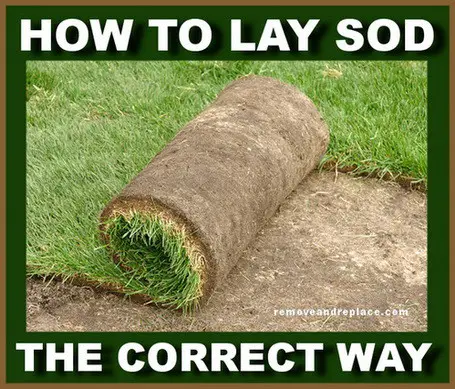We need to lay sod in our backyard. Our backyard has sparse patches of ugly grass and weeds here and there. Our objective is to remove all the existing old grass and weeds. What is the best way to remove all the grass and weeds before I lay down the new sod?
The easiest way to prepare and remove all of the old grass and weeds is to completely remove it. The best and most efficient way of doing this is with a Rototiller. Rent a high quality rototiller and use it to remove the exiting grass and weeds. It is a good idea to cut down about 2 to 3 inches into the soil so you have a fresh surface to lay down your new sod. After you have tilled the ground, use a metal bow rake and smooth the soil. You can at this point use a fertilizer on the soil before you lay the sod down.
Landscaping professionals also do not recommend to add the plastic barrier under the sod to stop weeds. Weeds will usually still grow through and the plastic sheeting barrier usually degrades over time. Be sure not to run into any irrigation water lines when using the rototiller. Mark each sprinkler head with a small flag.
Through experience, it is not best to lay sod over existing grass. If you want the new sod to look its best and with no old weeds or old grass growing through it, till the ground and remove the old grass first.
The cost for laying sod will depend on the size of the area you are covering. Obviously if you do it yourself, it will cost less. The cost of laying sod will also vary depending on what time of year it is and where you are located.
The easiest way to lay sod is to have it delivered to your home pre-cut into 4 to 12 foot lengths. The sod will come in rolls and you will simply need to unroll the sod into the spot it is going to be placed. This makes it easier to lay the sod down yourself with minimal help. Once the sod is in place, run a sod roller over it to eliminate any air pockets. Water it immediately, then water everyday as moistening the soil to a depth of 4 inches is best. The sod should take root in 2 or 3 weeks. Avoid mowing the sod until it is completely rooted. Find out if the sod has rooted by easily pulling at it. If you feel any slight resistance then you will know the roots are anchored in the soil. NOTE: Watering frequency of sod will depend on the rainfall frequency where you live as more rain will mean less watering manually.
The best time to lay sod is spring and early autumn because cooler temperatures and occasional rain help the sod quickly root into the soil. If you need to lay your sod in the summer time, water a few times a week for multiple weeks. If able, lay the sod on a cloudy day where sunlight is not bright. This helps not stress the sod and will help it to root better.
How to Prepare and Install Sod the Easiest way
Do you know any other easy ways to prepare, lay, and care of sod? Please leave a comment below to assist our other readers.




I’m going to be laying sod in my front yard in a few weeks and want to make sure I do all I can to have healthy grass. I will definitely take your advice and use a rototiller to remove the old grass and weeds before placing the sod.
Thanks for sharing these suggestions with us! We recently finished building our house, and we’re finally looking to place sod in our yard. I hope that we’ll be able to lay it down as good as you have. Great installation video!